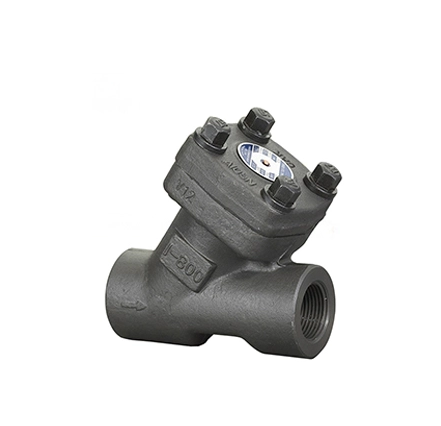Check valves, also known as non-return valves, are essential for ensuring one-way flow in fluid and gas systems, preventing backflow that can damage pipes, pumps, or other equipment. However, issues like leaks, noise, or stuck valves can disrupt performance. This guide provides practical steps to identify, troubleshoot, and fix common check valve problems, along with preventive maintenance tips to keep your systems reliable.
Leaking check valves can lead to backflow, reduced system pressure, or contamination. Common causes include worn seals, debris buildup, or improper installation. Symptoms include visible fluid leaks, dripping sounds, or pressure drops in the system. For example, a leak may occur if the valve’s seat or closure element is damaged, allowing fluid to seep through in the checked direction.
Stuck valves fail to open or close properly, often due to debris, corrosion, or a faulty spring. Noisy valves produce rattling, chattering, or hammering sounds, typically caused by water hammer (a pressure surge from sudden flow changes), turbulent flow, or worn internal components. These issues can disrupt flow consistency and damage the valve or connected systems.
| Issue | Symptoms | Possible Causes |
|---|---|---|
| Leaking Valve | Fluid leaks, dripping sounds, pressure drops | Worn seals, debris, improper installation |
| Stuck Valve | Restricted flow, valve fails to open/close | Debris, corrosion, faulty spring |
| Noisy Valve | Rattling, chattering, hammering sounds | Water hammer, turbulent flow, worn components |
Start by isolating the valve and depressurizing the system for safety. Inspect the closure element (e.g., disc, ball, or flapper) and seat for wear, corrosion, or debris. Check the spring, if present, for proper tension. Ensure the valve is installed in the correct flow direction, as indicated by the arrow on the valve body. Misalignment or reverse installation is a common cause of failure.
Use a pressure gauge to measure the differential pressure across the valve. The valve should open when inlet pressure exceeds the cracking pressure and close when pressure reverses or drops below this threshold. Test flow conditions to confirm the valve is appropriately sized for the system, as undersized or oversized valves can cause noise or sticking. For precise testing, follow standards like MSS SP-61, which outlines shell and seat closure tests using water or air at specified pressures (e.g., 1.5x the 100°F rating for shell tests).

KFTE's Y Forged Check Valve
If leaks or sticking are detected, replace worn seals or springs with manufacturer-recommended parts. For example, a damaged elastomer seal on the valve seat may cause leaks, while a weak spring can prevent proper closure. Always drain the system and follow safety protocols before disassembly. After replacement, reassemble and test the valve to ensure a tight seal and smooth operation.
Debris buildup is a frequent cause of stuck or noisy valves. Disassemble the valve, clean the closure element and seat with a suitable solvent or compressed air, and inspect for damage. Avoid abrasive methods that could harm the valve’s surfaces. Reassemble, lubricate moving parts if needed, and test the valve to confirm proper function. Regular cleaning can prevent debris-related issues.
Establish a maintenance schedule to inspect check valves every 6–12 months, depending on system demands. Check for wear, corrosion, or debris, and verify proper operation. For high-pressure or critical systems, more frequent inspections (e.g., quarterly) can prevent costly failures. Testing per standards like MSS SP-61 ensures early detection of issues.
Selecting the right valve for your application minimizes issues. Consider factors like material compatibility, pressure ratings, and flow conditions. Properly sized valves installed in laminar flow conditions (e.g., with 5x nominal pipe size of straight pipe upstream) perform best. Ensure the valve type matches the system’s needs, such as using valves designed for vertical or horizontal lines to avoid gravity-related issues.
Check valve failures, such as leaks, noise, or stuck valves, can disrupt system performance and cause damage, but they are preventable with proper troubleshooting, repair, and maintenance. By following the steps outlined—inspecting components, testing pressure, replacing parts, and maintaining a regular schedule—you can ensure reliable operation and extend valve lifespan. For high-quality check valves and expert support, explore the check valve catalog at KFTE Valves. Contact our team at KFTE Valves for tailored solutions to meet your system’s needs.
Wikipedia. (2025). Check Valve. An overview of check valve functions, issues, and maintenance. Available at: https://en.wikipedia.org/wiki/Check_valve.
American Society of Mechanical Engineers (ASME). (2023). ASME B16.34: Valves Flanged, Threaded, and Welding End. Standards for valve design and maintenance. Available at: https://www.asme.org/codes-standards/find-codes-standards/b16-34-valves-flanged-threaded-welding-end.
International Organization for Standardization (ISO). (2021). ISO 15761: Steel Gate, Globe, and Check Valves for Sizes DN 100 and Smaller. Specifications for check valve testing. Available at: https://www.iso.org/standard/77636.html.